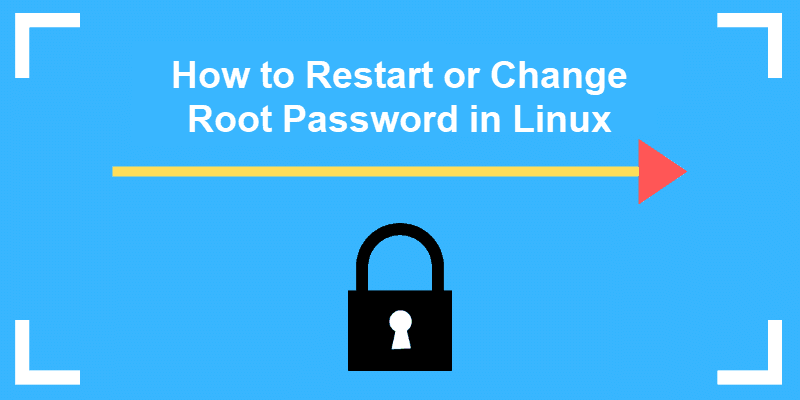how to change or reveal a password in linux
Introduction
In Linux, root privileges (or root admission) refers to a user account that has total access to all files, applications, and system functions.
Most basic Linux user accounts run with limited privileges. This keeps users from making mistakes or accidentally exposing the arrangement to vulnerabilities.
To use protected operating organization features, a Linux user has to temporarily elevate their privileges using a control similar sudo . The sudo command tells the arrangement to run a command as a superuser, or root user. When you run a function using sudo , you'll ordinarily have to enter your password.
Some versions of Linux volition elevate your user privileges for a fix corporeality of time effectually (xv minutes) before reverting. Other versions but perform a single task with elevated privileges.
It'due south a skilful idea to change your passwords regularly and consider using enterprise password management software.
This guide will help you change your Linux root password in Ubuntu or CentOS, or reset the password.

Prerequisites
- A figurer running Linux
- Control-line interface (last)
Irresolute Your Root Password in Ubuntu
Step 1: Open a Terminal Window
Right-click the desktop, then left-click Open in last.
Alternately, you can click Menu > Applications > Accessories > Terminal.
Step ii: Change Your Root Countersign
In the terminal window, type the following:
sudo passwd root The organization will prompt yous to enter your countersign – this is the same password you use to log in to the system.
Adjacent, the system will prompt yous to enter a new password. Do so, and so re-enter it exactly the same when the organisation prompts yous to retype the password. This double-entry confirms that y'all have typed the password correctly.

Resetting a Root Countersign in Ubuntu
In some situations, you may demand to access an account for which y'all've lost or forgotten a password.
Pace ane: Boot to Recovery Mode
Restart your system. Once yous encounter the splash screen for the reckoner manufacturer, hold downward the shiftkey. The organization should come up with a blackness and white GRUB, or boot menu, with unlike Linux kernel versions displayed.
Select the second one from the acme – the highest revision, followed by (recovery way). Press Enter.
Step 2: Drop Out to Root Crush
The organisation should display a menu with different boot options. Utilize the arrow keys to navigate to the option labeled rootand press Enter.
The organisation should reply by giving you a command-line interface with a prompt.
Pace 3: Remount the File Arrangement with Write-Permissions
Right now, your system only has read-only access to your organization. That ways it tin expect at the data, but cannot make any changes. Only nosotros need write-access to modify the password, so nosotros'll demand to remount the drive with the advisable permissions.
At the prompt, blazon:
mountain –o rw,remount / Press Enter. This should allow you to make changes to the data on the difficult drive.
Step iv: Change the Password
At the prompt, blazon:
passwd username Substitute the name of the user for username, so press Enter. The arrangement asks yous to type a new UNIX password and then to retype it.
One time you've entered and confirmed the new password, reboot the system by entering the post-obit:
shutdown –r Hit Enter, and your system should restart. Don't printing whatever keys, let the system come up up to the login screen, and test to make sure the new password works.
Changing the Root Countersign in CentOS
Changing a password in CentOS is nigh identical to changing it in Ubuntu.
Step one: Access the Command Line (Terminal)
Right-click the desktop, and so left-click Open in Terminal. Or, click Menu > Applications > Utilities > Terminal.
Stride 2: Change the Password
At the prompt, type the following, so printing Enter:
sudo passwd root The system should prompt you to enter your existing countersign. Do and so, then follow the prompts to enter and confirm a new root countersign.

Reset Root Countersign in CentOS
This is a similar process as in Ubuntu, with a couple of variations.
Step 1: Access Boot Menu
Restart the system, and so tap the Esckey about once per second to launch the Grub carte du jour.
Pace 2: Edit Kicking Options
Use the arrows to highlight the version of Linux you boot into, then press due east.
Use the arrows to highlight the line that starts with kernelor Linux.
Press E.
At the end of the line, add a infinite so type unmarried. Press Enter, then boot into single-user mode by pressing Ctrl-X or B. (The system will display the command to use.)
Stride 3: Remount the Bulldoze
Y'all should have a control line, and yous'll have root privileges. To enable read/write access on your hard drive, type the post-obit:
mountain / -o remount,rw Step iv: Changing the Password
Type the post-obit:
passwd Press Enter, and the system should prompt you lot to enter and ostend a new password.
Step 5: Restart
Blazon the following, pressing enter after each line:
mount / -o remount,ro sync reboot Your system should restart. Ostend that your new password works by logging in.
Note: If you ever come across a Linux boot failure, be sure to save our guide on using Chow rescue to troubleshoot it.
Conclusion
If you already accept access to your user business relationship, resetting or changing your password in Linux is unproblematic.
Information technology can be more challenging if you've lost or forgotten a password, but with a little artistic restarting and editing, you shouldn't discover it too hard.
Was this article helpful?
Yes No
Source: https://phoenixnap.com/kb/how-to-change-root-password-linux
Posted by: espinozaexuld1949.blogspot.com


0 Response to "how to change or reveal a password in linux"
Post a Comment